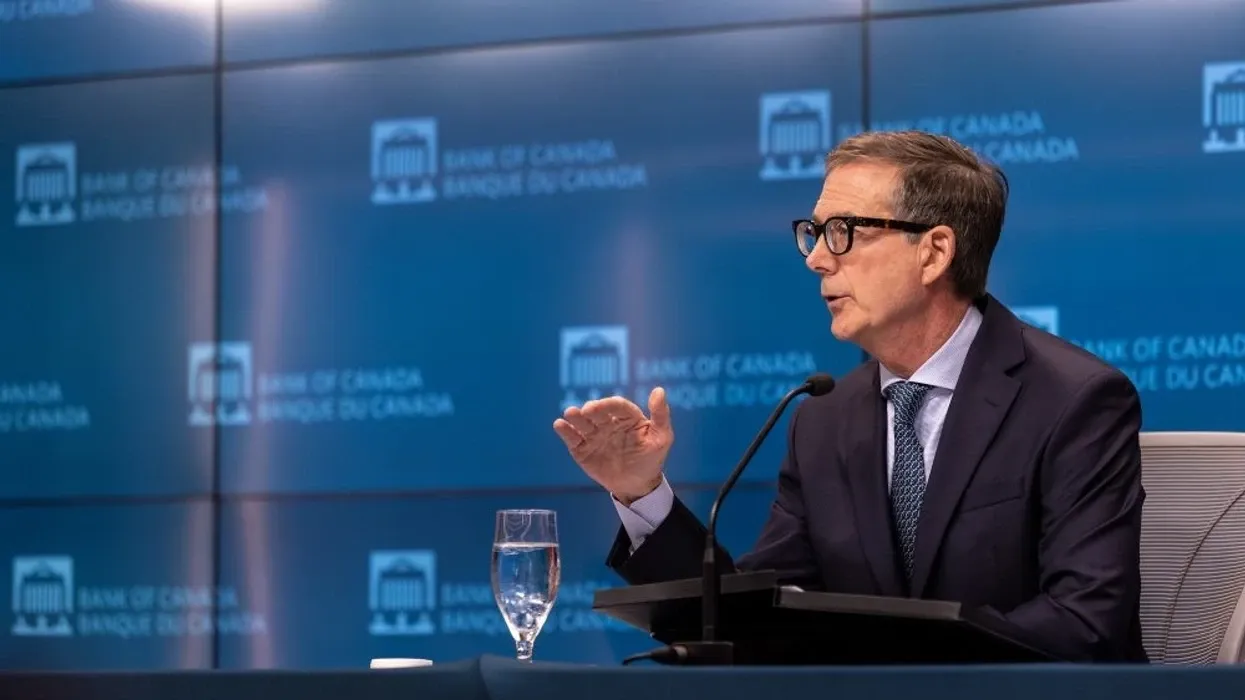This week will bring the Bank of Canada’s final interest rate decision of the year, and the consensus seems to be that the benchmark rate will be held at 5%. But that doesn’t mean Canadians are in the clear. Some economists are warning that monetary policy will continue to lean hawkish moving forward, and that it’s too soon for the bank to say anything concrete about rate cuts.
Derek Holt, Vice President and Head of Capital Markets Economics at Scotiabank, says there’s “a low, but non-zero probability” that the BoC will opt for a hike on Wednesday.
He writes in a note from Friday that a hike would “shock markets,” but the bank may not be discouraged by that if they feel it’s “the right thing to do.”
“The BoC does have a tendency to surprise markets as we’ve seen several times during the cycle. It’s an aloof organization that couldn’t care less if traders wind up drowning their sorrows at the local watering hole,” says Holt.
However, he adds that Governor Tiff Macklem may not have the wherewithal to hike given the latest inflation reading, which came down to 3.1% year over year in October.
“[Macklem] recently guided that the policy rate might be restrictive enough, but they were not sure and were prepared to tighten again if needed.”
Wednesday’s rate decision will be followed by a speech from Governing Council on Thursday, it’s worth noting. Holt anticipates that Thursday’s speech will be the more “insightful” of the two events, and could be revealing of the bank’s “hawkish bias.”
“For one thing, the bond market — and hence the mortgage market — has got to be catching their attention again,” he says.
“Mortgage rate cuts are back in vogue now and thanks to the fact that a key driver of fixed-term mortgage rate pricing — the five-year GoC yield — is down by almost a percentage point from the peak and back to levels unseen since early last June.
“The BoC needs to be very careful to avoid doing anything this week that would drive 5s richer yet. We could wind up plumbing the sub-3% depths into the winter mortgage pre-approvals and spring housing markets and unleash greater inflationary pressures through another powerful housing boom with spillover effects on related consumption.”
Last week also brought new GDP and labour market data, which will certainly play into the tone of the Bank’s deliberations, according to a report from TD Economist Marc Ercolao.
Ercolao says that although the Canadian economy is “showing weakness” — GDP contracted by an annualized 1.1% in the third quarter — the country has thus far managed to stave off a technical recession. On the employment side, he notes that recent data from Statistics Canada shows that employment growth slowing, “but hasn't fully ceded its strength.”
“Developments this week support our forecast that the BoC is done with rate hikes. However, it is too early for the BoC to lean too dovish at next week's meeting and say anything about rate cuts or their timing,” Ercolao writes. “The Bank will likely need to see inflation, especially core measures, move durably lower before they move off their bias towards rate hikes.”
Nonetheless, there is evidence that the Canadian economy is slowing and on track to soften further, RBC economists Nathan Janzen and Claire Fan explain in a recent note.
“The BoC will remain mindful of inflationary risks and retain the option to move interest rate higher. But we don’t see that as likely to be necessary,” they write. “Focus has shifted from whether additional interest rate hikes will be needed to how long before the first cuts.”
In contrast to both Holt and Ercolao, Janzen and Fan anticipate a “dovish lean” from the BoC on Wednesday (relative to past interest rate decisions). Even so, they say they don’t believe the bank will be in any ‘rush’ to cut rates.
“Lower inflation prints over the late fall were welcome but followed a string of ‘sticky’ core inflation readings. We expect the BoC will stay on hold through the first half of 2024 before moving to rate cuts in Q3 next year.”
- Another Rate Hike Possible As Housing 'Stands In The Way' Of Disinflation: BoC ›
- Bank Of Canada Holds Interest Rate At 5% Amid Affordability Struggles ›
- How Each BoC Interest Rate Hike (And Hold) Has Implicated Home Sales ›
- 2% Inflation Target Now In Sight, “Still Too Early” To Talk Rate Cuts: Macklem ›





















